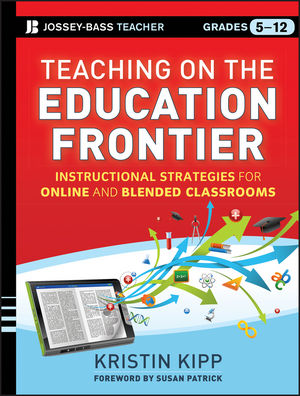This blog has always been a place to document what I’m learning about teaching in an online space. You’ll notice that my posts go all the way back to 2009.
In this place of wrestling and “small margins,” the school year suddenly started. My own children are starting to learn in a virtual space, and even This American Life has gotten in on the act of exploring how to teach virtually. I can’t remain silent anymore. While this humble blog won’t have all the answers, I hope I can provide you with small tidbits that can help in this enormous transition.
I’d like to start with something so very basic that we may have all overlooked it. How we learn. In the best classrooms, students learn in lots of ways. They listen, they read, they watch videos, they talk to each other, they act, they research, they debate, and they create new things from what they have learned. Online learning is no different. The medium looks different but how students learn remains the same. We just have to find ways to access that process through technology.
In virtual learning, there are many ways to present, absorb, and share content. While teaching in a synchronous session on Zoom or Google Meet may be our default (because it’s easy to create on short notice), it’s not the only way to teach. Just as we don’t teach with only lecture in a f2f classroom, we can’t create high-quality online learning with just one tool. If the only tool we have is a hammer, all problems start to look like nails (and students might not appreciate that!). If you’re living with just a hammer in your tool belt right now, please realize there are a lot of other options out there that will produce high-quality student learning and perhaps student learning that’s a lot more engaging.
My own children are spending 60-100% of each school day in synchronous sessions. Their poor spirits are tired. I see the fatigue in their eyes. While their teachers are admirable and amazing, engaging students in a video chat for that long is exhausting for all.
So, what else could that virtual learning look like? Here’s a list of places to get started:
- Read an article and write a reaction.
- Watch a video and engage in an asynchronous online discussion.
- Research a topic and share what you found in FlipGrid.
- Email a classmate and tell them what you know about a topic. Let them respond with questions. Then research and answer their questions.
- Read a textbook chapter and create a graphic organizer about what you found. (Google Drawing is a great choice!)
- Watch a video and create a video response to it.
- Create a podcast about what you’re learning.
- Record a video of you explaining a topic.
- Read a book and write in the margins.
- Read an article and create a poem “found” within the text that summarizes the most important ideas.
- Create a slideshow that teaches someone else about what you’re learning.
- Open a synchronous session, send students out on a silent scavenger hunt, and then come back 40 minutes later to share what you learned. (Or have them post what they’re finding throughout the session…)
- Connect with a student in another part of the world via email, Twitter, or otherwise. Tell them about what you’re learning.
- I could go on and on…
These activities probably look pretty familiar. They’re the kinds of things we’d do in a classroom. We absorb new information and then we create something with it. It’s how we learn. Online learning is no different. It’s ok to send students out with some resources and ask them to learn something. You don’t always have to be the direct deliverer of content. Then ask them to create something with what they learned. You’ll be amazed at what they are capable of, even when you can’t see them.
